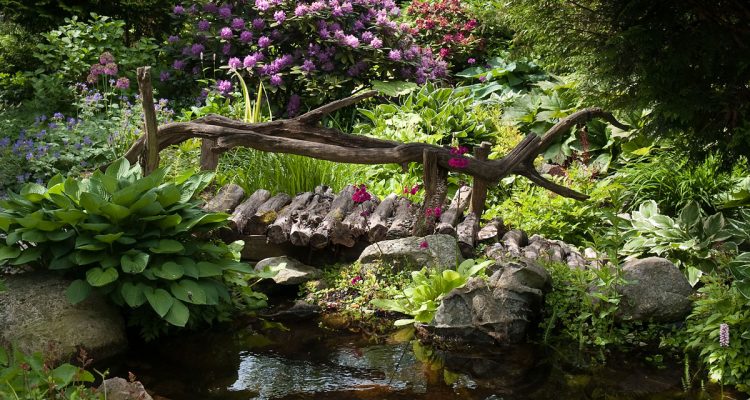Whatever water feature you are planning to build, it is critical to invest in a high-quality water liner. A water liner should be made out of puncture resistant geomembrane material that is used to retain water. A high-quality liner will stop water from leaking into the ground and plant material trying to force its way through while creating an environment for your aquatic life. You have a couple of options for water liners, but depending on your application and design, you’ll be able to find one that fits your project perfectly. There are two main types of water liners for residential applications: the preformed pond liner and the flat/flexible water liner. Knowing which one to choose will help you to plan for the next steps for installing your water feature. Find out which liner is best suited for your application.
Preformed vs. Flat and Flexible
The preformed water liner, also known as a shell, is ready-made. This means this liner is shaped out of plastic or rubber, so it is less versatile with design and more expensive. You can only select from a few styles, so you are limited in your backyard design. Another important note is preformed liners may not have the same treatment features as flat water liners. Some of these missing features may include being UV protective or plant and fish safe. If you are looking to design your water feature, a flat water liner might be just what you are looking for. Flat water liners are free-form and flexible which means you can develop the shape of your water feature. They are less expensive than preformed water liners and allow you to create any form with whatever depth you’d like. This water liner will give you the flexibility you need to create a design that is special to your backyard. Depending on the brand, these water liners could be UV resistant and safe for aquatic life.
Best Water Liner for Your Application
We believe selecting a flat water liner option gives you more control and design when it comes to your water feature. When you choose a flat water liner, take in account the length, width, and depth, and buy a slightly larger size than you need. The excess can always be trimmed later. It is important to note what your water liner will be laying on when you set it in place. If there are roots or rocks, you will want to go with a thicker material. UV resistance will also extend the lifetime of your liner. Choosing a water liner that has a suitable thickness and quality, will save you money in the long run. At BTL we recommend our RPE and RPP water liners. RPE and RPP do not require an underlayer water liner because they are durable on their own. Unlike certain water liner materials, our liners do not release any plasticizer into the water. Our liners are plant and fish safe, UV protective, and puncture resistant. BTL Liners are used for a variety of applications, from ponds to waterfalls, you’ll be able to find the perfect water liner for your project. We can even help with the installation of your liner. BTL Liners can help with a variety of applications in a residential setting. If you have any questions or would like to discuss your project needs, please give us a call. We’d love to help you with your project and advise the best liner for your application.




